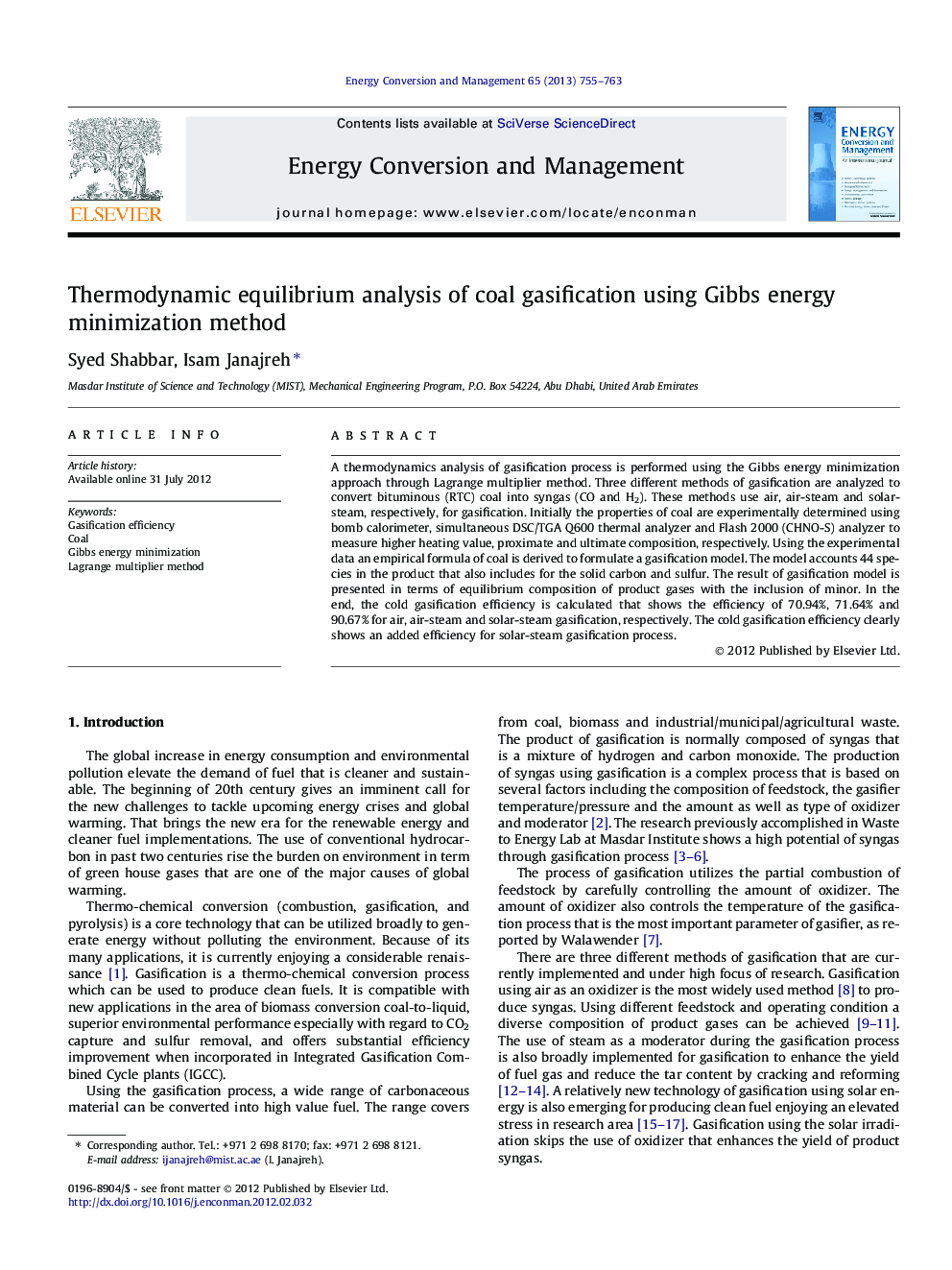| Article ID | Journal | Published Year | Pages | File Type |
|---|---|---|---|---|
| 761073 | Energy Conversion and Management | 2013 | 9 Pages |
A thermodynamics analysis of gasification process is performed using the Gibbs energy minimization approach through Lagrange multiplier method. Three different methods of gasification are analyzed to convert bituminous (RTC) coal into syngas (CO and H2). These methods use air, air-steam and solar-steam, respectively, for gasification. Initially the properties of coal are experimentally determined using bomb calorimeter, simultaneous DSC/TGA Q600 thermal analyzer and Flash 2000 (CHNO-S) analyzer to measure higher heating value, proximate and ultimate composition, respectively. Using the experimental data an empirical formula of coal is derived to formulate a gasification model. The model accounts 44 species in the product that also includes for the solid carbon and sulfur. The result of gasification model is presented in terms of equilibrium composition of product gases with the inclusion of minor. In the end, the cold gasification efficiency is calculated that shows the efficiency of 70.94%, 71.64% and 90.67% for air, air-steam and solar-steam gasification, respectively. The cold gasification efficiency clearly shows an added efficiency for solar-steam gasification process.
Graphical abstractFigure optionsDownload full-size imageDownload as PowerPoint slideHighlights► The empirical formula of RTC coal measured to be CH0.8173O0.0785N0.0260S0.0052 with HHV of 30.42 MJ/kg. ► The efficiency of air, air-steam and solar steam gasification are calculated to be 70.94%, 71.64% and 90.67%, respectively. ► We find out that using heat of solar energy high quality syngas can be produced via gasification with low CO2 emissions.
